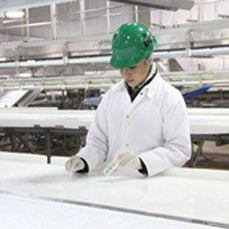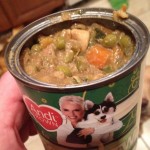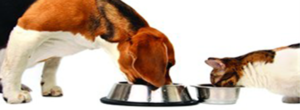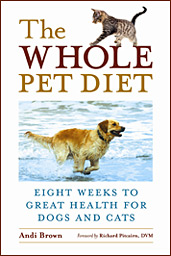Every day I’m asked why we boast that Doc’s Stew is made in a USDA kitchen and what makes it so different from every other pet food on the market today. The real answer is shocking, but for the sake of your pets, their health and your pocket book, you really need to know about it now!
“If I won’t eat it, My pets won’t ever get it. Why would I opt for anything less?”
Doc’s Stew is the only pet food which can claim that every one of its ingredients are fit for human consumption and is produced under the strict guidelines of a USDA Kitchen right here in America. To prove that point, we even state it on the label.

Everyone wants to believe that their current pet food maker has their pet’s best interest at heart. We all want to think we’re savvy shoppers, great label readers and are up on the blogs and articles about what’s the best food for the ones we love. We have to know how to read between the lines, because the sad truth is that pet food companies are permitted to use ingredients from sources you would never knowingly want to give to your pet.
Since the GIANT pet food recall in 2007, hundreds more have followed and all kinds of pet foods and treats are making the “bad” news on a daily basis. We’ve seen salmonella contamination, toxic ingredients from China, E. coli, mold, “unusual odors”, aflatoxin, and even toxic levels of vitamins or minerals. The brands that you my be loyal to may not have escaped the problems either. There’s not a conscientious pet owner who hasn’t wondered (at least for a moment) if their own food is the next time bomb in the wake of this growing epidemic.
USDA Accepted or USDA Rejected? All meats are USDA “inspected”. To be allowed in a HUMAN food facility it has to be USDA ACCEPTED. What goes into a PET FOOD plant is USDA REJECTED.
The truth is that no one is monitoring the pet feed makers and all kinds of deleterious ingredients are becoming commingled at the pet food processing plants. The bona fide problem is that these pet feed companies and their suppliers have no real regulatory board to answer to and their manufacturing, packaging and delivery practices typically go unchallenged, and unnoticed. The main difference between a healthy, human food plant and a pet feed plant (by government definitions) rests in the rules that a USDA Facility must subscribe to Good Manufacturing Process (GMP). For all animal feeds (made in a pet food facility), there are no mandatory good manufacturing processes in place.
At Holiday Holistic Pets, we understand that food borne illness can cause serious legal and ethical repercussions.
Our USDA kitchen is managed under strict guidelines to ensure our foods are kept at proper temperatures, are stored correctly and handled in the most sanitary way possible.  Each week, we must pass rigorous government inspections in order to remain operational. Great care is taken to maintain the high standards required by the USDA in the handling, preparation and storage of foods – ensuring that only the finest quality comes out of the Holiday Holistic Pets kitchen. All of the ingredients in Doc’s Stew are easy for the body to absorb, utilize, assimilate and eliminate. Doc’s Stew is simmered at a very low temperature to make sure that the ingredients retain all of their nutrients. When food is carefully prepared and made up of FRESH high quality, nutrient dense ingredients; it becomes unnecessary to add a slew of isolated vitamins and minerals to exceed AAFCO standards. This is why Doc’s Stew boasts the shortest but synergistically complete ingredient panel.
Each week, we must pass rigorous government inspections in order to remain operational. Great care is taken to maintain the high standards required by the USDA in the handling, preparation and storage of foods – ensuring that only the finest quality comes out of the Holiday Holistic Pets kitchen. All of the ingredients in Doc’s Stew are easy for the body to absorb, utilize, assimilate and eliminate. Doc’s Stew is simmered at a very low temperature to make sure that the ingredients retain all of their nutrients. When food is carefully prepared and made up of FRESH high quality, nutrient dense ingredients; it becomes unnecessary to add a slew of isolated vitamins and minerals to exceed AAFCO standards. This is why Doc’s Stew boasts the shortest but synergistically complete ingredient panel.
To ensure the safety of your pet, our attention to special details is particularly important.
1. All ingredients are correctly labeled, certified as natural and approved for human consumption
2. Keeping ingredients sanitary, in proper containers and off the floor.
3. Every surface which contacts a product must be examined for potential microbial growth.
4. Guidelines for plumbing, and access for workers to have hot running water and hand sanitizers.
5. All staff must wear service gloves, hair and beard nets, and clean coats throughout every station in the facility.
6. Perishable items such as meats and vegetables must be stored at temperatures recommended by the USDA guidelines for safety. Thermometers are in constant check.
Pet Food Plants on the other hand are permitted to bring in just about anything they want, without scrutiny of any governing body and sanitary manufacturing practices are non-existent.
Pet Food Makers are allowed to procure and use the following ingredients:
1. 4-D Meats, which mean animals that arrive at the slaughterhouse; Dead, Diseased, Dying or Disabled.
2. Meat meal, chicken meat, fish meal. These are the ground up and non-specific leftovers from whatever was rejected for human consumption, such as beaks, feet, hooves, hair, eyeballs and connective tissue.
3. Road kill and even the remains of euthanized animals from hospitals or shelters.
Is it any wonder why so many pets go back and forth to the veterinarian’s office with all kinds of chronic health problems? According to my holistic veterinarian, Dr. Deva Khalsa; “a shocking 50% of the dogs over two years old will develop cancer if people don’t pay closer attention to diet right now”.
(If you read Ann Martin’s book: Food Pets Die For, she clearly documents the careless and unscrupulous practices taking place in pet food plants across North America). You’ll be also equally shocked to watch an interview with a former President of AAFCO (The American Association of Feed Control Officials) as he reveals that Fido and Fluffy could actually be a part of your own pet’s food! As pet owners – we should be outraged!
Pet Food makers have been trying to trick the public for years, and if you watch my interview  with John Stossel on “20/20” you’ll see that the President of a Major Pet Food Line thinks it is alright to fool your pets into eating their products. He explains that his own puppy food has no more nutritional benefit than adult food, but that consumers want to “think they’re giving something special”, hoping their puppies grow up stronger. Later on he goes on to mention that dry food is made up of just cereal and that dogs would never actually want to eat it, without the addition of flavor enhancers, such as liquefied chicken guts.
with John Stossel on “20/20” you’ll see that the President of a Major Pet Food Line thinks it is alright to fool your pets into eating their products. He explains that his own puppy food has no more nutritional benefit than adult food, but that consumers want to “think they’re giving something special”, hoping their puppies grow up stronger. Later on he goes on to mention that dry food is made up of just cereal and that dogs would never actually want to eat it, without the addition of flavor enhancers, such as liquefied chicken guts.

The better the quality of the food we eat; the better we’re all going to look and feel. The same thing holds true for our pets. If your pet is going back and forth to the vet’s office more than one time a year, you need to ask yourself what would happen if I tried using food that was good enough for any health food enthusiast to eat. Don’t let anyone you love be the victim of the next pet product recall.
You have a choice. You can make your own pet’s food and treats, using recipes right here on my website, or buy the healthiest food in the world, already made with the freshest, high quality ingredients ever. Try Doc’s Stew. Your pets will love them too!

Celebrate Your Pet’s Great Health and Make Every Day a Holiday!
Xox
Andi Brown & “Doc” Holiday
Remember the 2007 Pet Food Recall? Better safe than sorry!
Here’s a link to all the pet food and treat recalls in the last few years.








3 Responses
I see no where that your food is usda inspected,is this true. talking about usda inspection and being usda inspected is two different things.
Bob, you are definitely right. For a short while I made Doc’s Stew, which was produced in a USDA kitchen, made entirely with Human Grade Ingredients. Unfortunately the cost of producing it and shipping it became cost prohibitive. We were VERY proud of our wonderful stew, and now encourage everyone to cook for the ones they love. It’s so important. Unfortunately, I cannot recommend any commercial foods or treats at this time. Sad. Thanks for your input! xox Andi
Years ago, a friend and I cooked for our 8 Salukis. We bought chicken necks and backs, and using a small pressure cooker, reduced the whole mass to very safe, digestible high nutrient stew. we added dandelion greens for vit a, brewers yeast for b, and other meats. this we mixed with kibble. The pressure cooker breaks down the bones so they are not brittle and splintering.